One of the things I’ve always wanted to focus on, with this blog, is how the tools we use, sometimes provide simple and effective solutions. For instance, there are always cases, when we develop hierarchies on DRM, where we will need to filter down our exports based on the existence of duplicate attributes. In other words, if a property has the same value for 2 nodes, don’t export it out. Or, filter our shared nodes from a hierarchy.
One way to do this, might be to put a filter on our export.
A filter query is a powerful tool, and can help you in any number of scenarios. But, do we really need to use formulas to filter a duplicate node or duplicate property out? Not really. To look at how we might filter out duplicates, let’s take a look at our hierarchy.
For the hierarchy above, I would like to filter out all nodes with duplicate descriptions. In other words, we only need “unique” descriptions in our export. If we don’t make any changes, this is what our export would look like.
And this is what the output would look like:
Now, to filter out any nodes with duplicate descriptions, all we have to do, is navigate to the “Columns” tab, and select “Column Options”.
There are a few different options here. For today, we will focus on the “Primary Key” option.
This allows us to define a field as the primary key to be used when determining whether duplicates exist. I’ve left the option checked.
We need to make one more change; let’s navigate to the “Style” tab. We need to make sure the following option is checked, so that DRM knows to do the primary key check.
If we run the export, we can see that duplicates have now been removed.
But, notice now that from the earlier file to the new one, we are missing a parent.
I understand why it’s missing, it’s because 2 nodes have the same description of “” (i.e., nothing). So, the second node is excluded from our export, as a duplicate. To fix this, just go back to the column options, and check the node name property as well.
Now, DRM understands that it needs to look at a combination of the node name and the description, to check for uniqueness. If we re-run the export:
We have the right results. An example of how this type of export might be used, might be if you have to export to a data warehouse. The warehouse tables might need to have uniqueness for member names, which you are now able to ensure, by using standard DRM functionality. Until next time, Cheers!





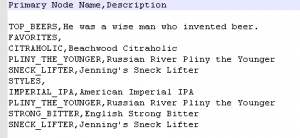
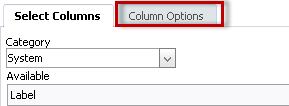
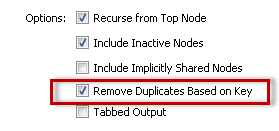
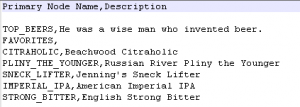

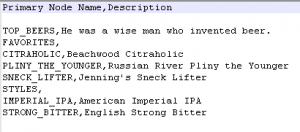
Hi,
Do you know or have you done a DRM validation to for duplicate aliases?
say you add a new Node with its aliases, to validate that before the node is imported to an export, there is no errors at all ?
Hi Lesley,
Thanks. There are a couple of ways to do this:
1. You can usually ensure uniqueness by doing a combination of node name + description, as your alias.
2. You can also set up version/hierarchy level validations which kick in as a batch validation, or as part of your export. What sometimes happens is, aliases may be unique within a hierarchy, but not for the database. Meaning, you could have 2 members (in different dimensions) on your cube, with the same alias in DRM, which would still cause issues on your dimension build. So, a version validation may work in this case.
Hope this helps.
in a validation use the Class “UniqueProp” and put in core.descr in the property field to handle duplicate descriptions